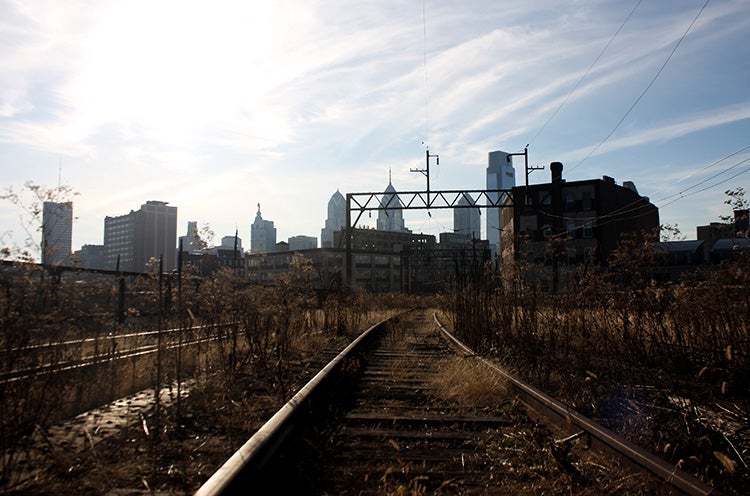Updated: Votes tallied, Callowhill NID is put to rest
First-District Councilman Mark Squilla’s office has confirmed that enough opposition votes were verified to officially put the possibility of forming a Callowhill Reading Viaduct Neighborhood Improvement District to rest.
“It’s dead on arrival,” said Sean McMonagle, a legislative aide to Councilman Squilla. McMonagle formerly worked in the offices of Councilman Frank DiCicco, who originally sponsored the legislation creating the NID.
Residents of the Callowhill and Chinatown North neighborhoods who were hoping to create a Neighborhood Improvement District to help pay for blight removal, street lighting, and other improvements got the support of City Council in its last session of the year. More than half the property owners in the proposed district—bounded loosely by Broad, Spring Garden, Vine and 8th streets—had opposed creating the district, according to votes tallied by the offices of Councilman Frank DiCicco and the City Clerk. City Council unanimously voted to pass the legislation anyway.
Writing in The Inquirer last week, NID opponent John Chin said he felt that neighborhood residents opposed creation of the District partially because they were left out of the process. “Let’s be clear: This fight was not about cleaner, safer streets,” Chin wrote. “The district was resoundingly rejected because the voters objected to the proposed taxation, as well as a politics-as-usual process that was lacking in transparency, clarity, and inclusion.”
According to McMonagle, 51.9 percent of property owners in the neighborhood voted to oppose the district. Opposition votes also represented 59.82 percent of total assessed property value in the area, McMonagle said. More than half on either of those metrics would have been enough to keep the bill from advancing in Council. McMonagle said he planned to meet with members of the NID in January to talk about other options.
Councilman DiCicco previously told PlanPhilly that the opposition votes still need to be verified, however. “I’ve never seen a petition not have some irregularities,” DiCicco said. The next legal step is to see what signatures are valid. If enough signatures are discarded, he said, having the legislation in place means the NID becomes reality. If enough signatures are valid to oppose, “the NID dies,” he said, noting that proponents could try again. As of Monday, the NID was dead, and its proponents were weighing their options.
Check out the 15:20 minute mark for the reading of the bill
Gayle Isa, founder and executive director of the Asian Arts Initiative (AAI) at 12th and Vine, said that a number of issues kept her organization and other property owners from supporting the NID. For one thing, many residents don’t want to see their taxes increased. If the NID were created, property owners would have to pay an extra tax for the services the District would provide. In addition, Isa said there is a “sense of factions” in the neighborhood, and some residents worried that the composition of the board for the proposed NID would not be diverse enough to represent the entire area. She said that a taxing authority that wouldn’t necessarily be responsive to all parts of the neighborhood would be problematic.
“There should be a way for this community to have better services,” Isa said, pointing out that she is in favor of “developing a mechanism” which would have the resources to clean up the neighborhood. But the NID, as proposed, was not that mechanism.
The NID had some support from the Nutter administration. In September, Deputy Mayor Alan Greenberger testified before City Council, saying that creation of a NID is “one element of an overall strategy to manage and plan for growth” in the neighborhood. Greenberger said the City’s support for the NID was contingent upon changes that would allow for consideration by every resident of the proposed district and removal of any references to the NID directing resources toward redeveloping the Reading Viaduct itself. The City insisted that the NID be used to perform street-level cleanup services.
John Struble, of the Callowhill Reading Viaduct Neighborhood Improvement District, said that the District’s steering committee had no immediate plans to move forward with creation of another such organization. He said the committee was planning to meet in the next few weeks. “It’s sort of disappointing, but that’s the way it goes sometimes,” said Struble.
The death of the NID legislation clouds the future of a proposed park on the Reading Viaduct modeled in part on the High Line in New York. An early version of the NID legislation proposed creating that park, though the provision was later removed, in part because it had no City Support. The out-of-use stretch of railroad sits about two stories above street level, and curves from Fairmount Ave. near 9th Street to Vine Street near 12th. Specific plans for a park on the viaduct were never settled on, but many community members continue to pursue the project.
Jamie Moffett, a filmmaker working on a documentary about linear parks across the world, said the failure of the NID would be disappointing for some in the neighborhood, but would not have an adverse effect on efforts to create a park on the viaduct. “I can’t imagine it’s a dealbreaker,” Moffett said.
Contact the reporter at jaredbrey@gmail.com
WHYY is your source for fact-based, in-depth journalism and information. As a nonprofit organization, we rely on financial support from readers like you. Please give today.









